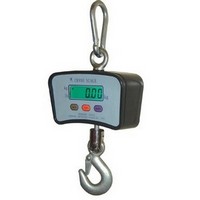Load Cells / Industrial Weighing
Load cells are force sensors that frequently incorporate mechanical packaging for fit into testing and monitoring systems. They can be used for tension, compression, and/or shear measurement, and can be configured to measure force or load along multiple axes. Load cells are widely used in mechanical testing, ongoing system monitoring, and devices such as industrial weigh modules and scales.
Important parameters for load cells include the force and load measurement range and the accuracy. The measurement range is the range of required linear output. Load cells can be configured with multiple axes. Bi-axial load cells can provide load measurements along two, typically orthogonal, axes. Tri-axial load cells can provide load measurements along three, typically orthogonal, axes.
Load cells can measure tension, compression, or shear. Tension cells are used for measurement of a straight-line force - pulling apart - along a single axis; typically annotated as positive force. Compression tension cells are used for measurement of a straight-line force - pushing together - along a single axis; typically annotated as negative force. Shear is induced by tension or compression along offset axes. Most load cells actually measure the displacement of a structural element to determine force. The force is associated with a deflection as a result of calibration. There are many form factors or packages to choose from: S-beam, pancake, donut or washer, plate or platform, bolt, link, miniature, cantilever, canister, load pin, rod end, and tank weighing.
Shear cell types for load sensors can be shear beam, bending beam, or single point bending beam. The most common sensor technologies are piezoelectric and strain gauge. For piezoelectric devices, a piezoelectric material is compressed and generates a charge that is conditioned by a charge amplifier. For strain gage devices, strain gages (Strain-sensitive variable resistors) are bonded to parts of the structure that deform when making the measurement . These strain gages are typically used as elements in a Wheatstone bridge circuit, which is used to make the measurement. Strain gages typically require and excitation voltage, and provide output sensitivity proportional to that excitation.
Outputs for load cells can be analog voltage, analog current, analog frequency, switch or alarm, serial, and parallel. Temperature compensated load cells provide special circuitry to reduce / eliminate sensing errors due to temperature variations. Other parameters to consider include operating temperature, maximum shock, and maximum vibration.
 Crane overload
Crane overload Check weighers
Check weighers Crane weighers
Crane weighers Tank weighers
Tank weighers Belt weighers
Belt weighers Silo weighers
Silo weighers Bag fillers
Bag fillers Load cell indicators, amplifiers, amplifiers PCB, elements
Load cell indicators, amplifiers, amplifiers PCB, elements Platform Weighers
Platform Weighers Remote RF monitoring
Remote RF monitoring Cement batch weighers
Cement batch weighers Flask weighers
Flask weighers















